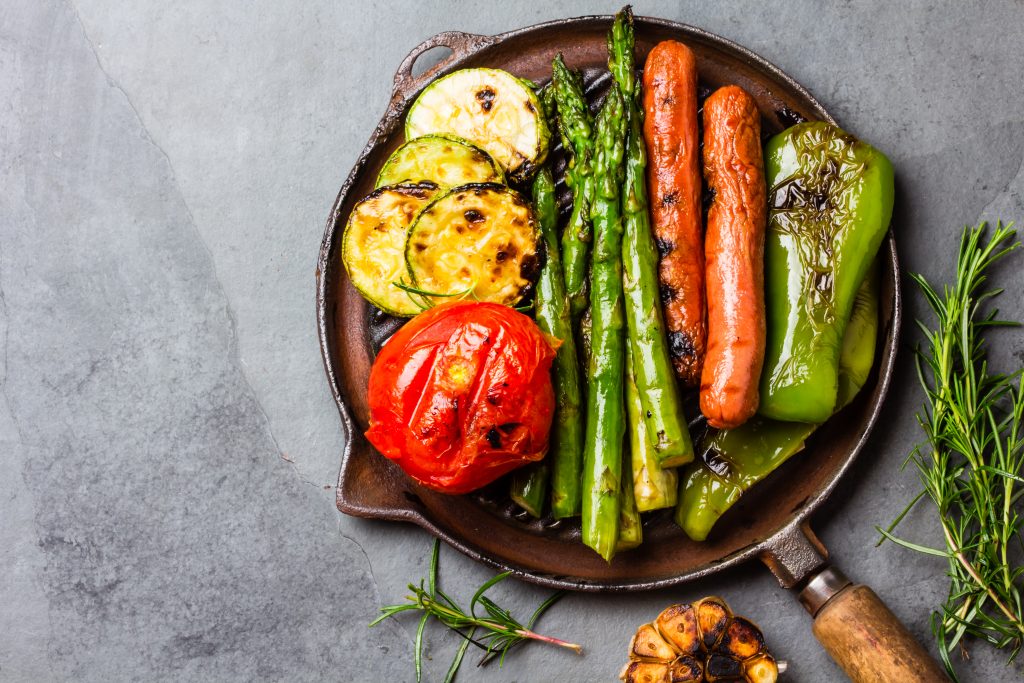Secrets to Perfectly Grilled Vegetables
Unlock the art of grilling vegetables with techniques to achieve perfect texture, flavor, and char every time.

The Art of Preparation
Grilling vegetables to perfection begins long before they hit the grill. Preparation is key to achieving the best flavors and textures. Start by selecting fresh, seasonal vegetables that are firm and vibrant in color. Wash them thoroughly to remove any dirt or pesticide residue. Cutting vegetables into uniform pieces ensures even cooking; this is crucial because vegetables have different cooking times. For example, denser vegetables like carrots and potatoes should be cut smaller than softer ones like zucchini or bell peppers. Marinating your vegetables can enhance their flavor significantly. A simple marinade of olive oil, garlic, lemon juice, and herbs can elevate your dish. Allow the vegetables to marinate for at least 30 minutes before grilling. Proper preparation not only enhances the flavor but also ensures a more enjoyable grilling experience.
Choosing the Right Tools
Having the right tools can make all the difference in grilling vegetables. A grill basket or skewers are ideal for smaller or cut pieces, preventing them from falling through the grates. If you prefer a smoky flavor, consider using a charcoal grill. Gas grills, on the other hand, offer more control over temperature, which is crucial for avoiding burnt or undercooked vegetables. Make sure your grill is clean before you start; residue from previous grilling sessions can alter the taste of your vegetables. A good pair of tongs is essential for flipping and moving the vegetables without piercing them, which can cause the juices to escape. Investing in a grill thermometer can help you maintain the right temperature, ensuring your vegetables are cooked to perfection.
Mastering the Grill Temperature
Temperature control is one of the most critical aspects of grilling vegetables. High heat is ideal for achieving those beautiful grill marks and a slightly charred flavor, but it can also lead to burnt vegetables if not monitored carefully. Aim for a medium to high heat setting, around 400-450°F. Preheating your grill is crucial; it ensures that your vegetables start cooking immediately, sealing in their natural flavors and juices. If you're using a charcoal grill, wait until the coals are white-hot before adding your vegetables. For gas grills, preheat for at least 10-15 minutes. Maintaining a consistent temperature throughout the grilling process is essential for even cooking. Remember, patience is key; rushing the process can lead to unevenly cooked vegetables.
Timing is Everything
Each type of vegetable has its own ideal cooking time, and understanding this can make or break your grilling success. Harder vegetables like potatoes, carrots, and corn take longer to cook, typically around 20-30 minutes. Softer vegetables like zucchini, bell peppers, and asparagus cook much faster, usually within 8-12 minutes. To avoid overcooking, start with the vegetables that take longer and add the quicker-cooking ones later. A good rule of thumb is to check for doneness by piercing the vegetables with a fork; they should be tender but not mushy. Remember, vegetables continue to cook after they're removed from the grill due to residual heat, so it's better to slightly undercook them.
Enhancing Flavor with Seasoning
While marinating can infuse vegetables with flavor, seasoning them just before grilling can add an extra layer of taste. Salt is a must, as it enhances the natural flavors of the vegetables. However, be cautious with the amount, as it can draw out moisture, leading to less juicy vegetables. Black pepper, paprika, cumin, or chili flakes can add a delightful kick. For a touch of sweetness, consider sprinkling a bit of brown sugar or honey. Fresh herbs like rosemary, thyme, or basil can be added just before serving to maintain their freshness and aroma. Experimenting with different spices and herbs can transform your grilled vegetables into a gourmet delight.
Achieving the Perfect Texture
The ideal grilled vegetable has a balance of crispness and tenderness. Achieving this texture involves both technique and timing. Avoid overcrowding the grill; giving each piece enough space ensures even cooking and proper caramelization. Turning the vegetables occasionally helps achieve an even char without burning. For thicker vegetables, consider parboiling them before grilling to ensure they cook through without burning on the outside. Keep an eye on the grill marks; they should be golden brown, indicating the vegetables are perfectly grilled. A slight char adds flavor but be cautious of over-charring, which can result in bitterness.
Serving and Storing Grilled Vegetables
Once your vegetables are grilled to perfection, it's time to serve them while they're still warm. A drizzle of balsamic glaze or a sprinkle of feta cheese can add a delightful finishing touch. Grilled vegetables can be served as a side dish or incorporated into salads, sandwiches, or pasta dishes. If you have leftovers, store them in an airtight container in the refrigerator. They can be reheated or enjoyed cold in salads. Grilled vegetables can also be frozen for future use, though it's best to consume them within a month to retain their flavor and texture. Proper serving and storage ensure you enjoy the fruits of your grilling efforts to the fullest.